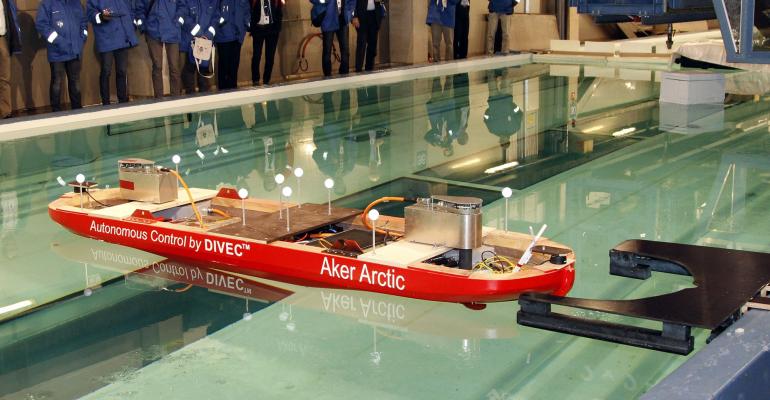The test was carried out in ice-free waters.
The wireless model used in the test was equipped with battery-powered propulsion units, data transfer to the 'shore facility' and an autonomous navigation system that routes the vessel around obstacles detected by the on-board sensors.
The various components are connected using Distributed Intelligent Vessel Components (DIVECTM), a specially developed network framework that provides a modern protocol for connecting devices and transferring necessary data between them.
While Aker Arctic’s ice laboratory is normally used to test icebreaking vessels, it is also ideal to develop and test the technology, sensors, algorithms and propulsion control systems being developed for autonomous vessels under harsh environmental conditions. DIVECTM provides an extensible and adaptable infrastructure that allows interfacing with third party systems and components.
The technology used in the autonomous ship model tests in the laboratory is also adaptable to semi- and full-scale prototypes.
Aker Arctic said that with this technology it is ready for the next step in the development of autonomous ships.
Copyright © 2024. All rights reserved. Seatrade, a trading name of Informa Markets (UK) Limited. Add Seatrade Cruise News to your Google News feed.


